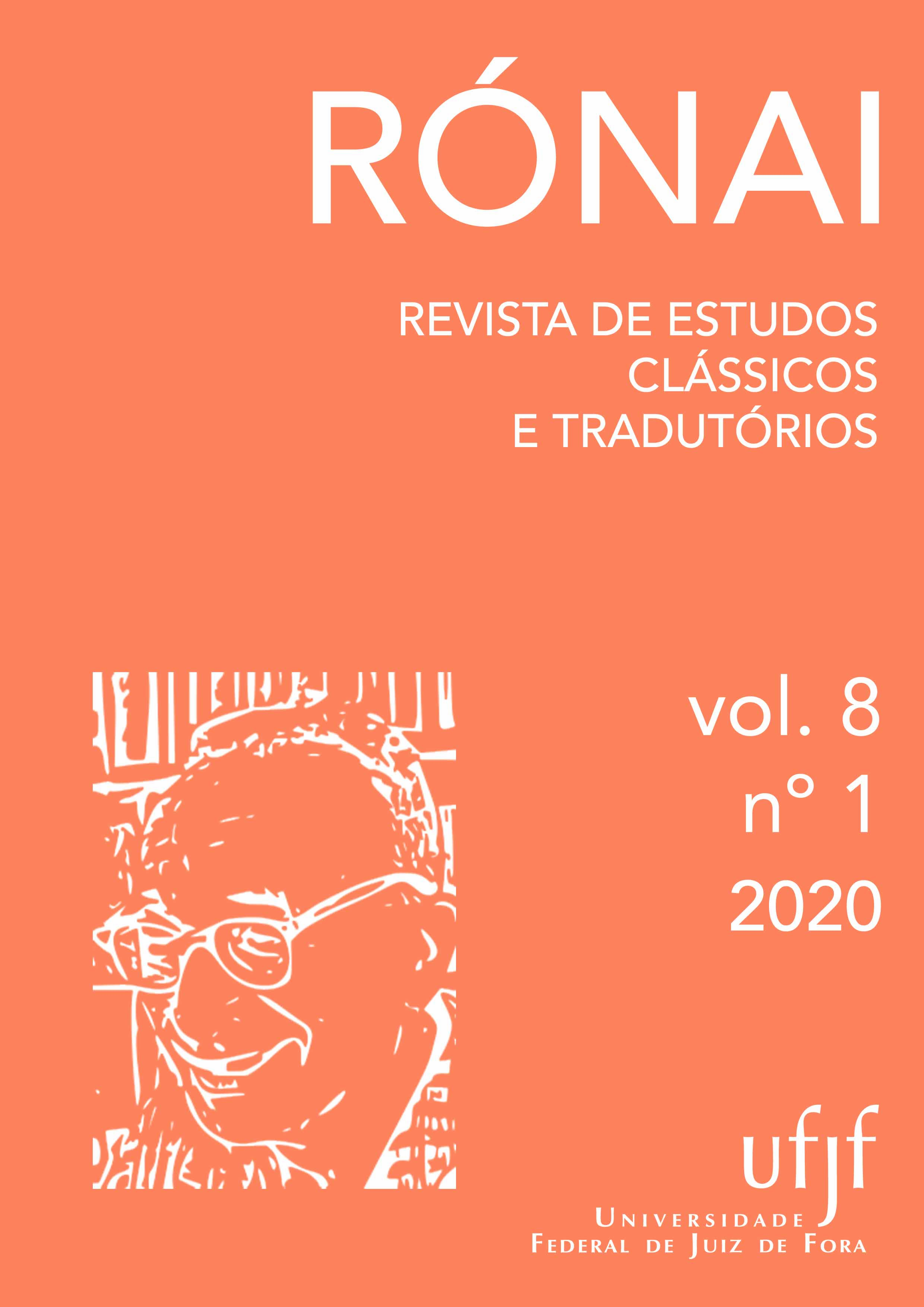Clinia’s Chansonnier: a poetic translation of Jean Visagier’s love epigrams
DOI:
https://doi.org/10.34019/2318-3446.2020.v8.30084Keywords:
epigram, Renaissance, Neo-Latin literature, elegiac coupletAbstract
Jean Visagier, a member of the humanistic circle of Lyon, published four epigrammatic works in Latin, between 1536 and 1538. Following the classical norms of the epigram, he composed most of them in the elegiac couplet. The range of their themes is large, as it is characteristic of the genre. Leaving aside the eulogistic and vituperative epigrams, the present translation focuses on a set of 30 love epigrams, in which a puella called Clinia is the central character and represents the most diverse scenes of the relationship with the amator, as in the erotic Roman elegy. The strong tradition of Antiquity, on the other hand, is also modulated by troubadour and Petrarchan concepts. The translation adopts metrified syllabic verses. In the case of the elegiac couplet, a couplet consisting of a 12- and a 10-syllable verse was chosen.
Downloads
References
BEER, Susanna; ENENKEL, Karl; RIJSER, David. The Neo-Latin Epigram: a learned and witty genre. Supplementa Humanistica Lovaniensia XXV. Leuven: LUP, 2009.
CAMPANHOLO, Silvia Helena. Tradução e análise do Liber Primus, da obra Inscriptionum Libri Duo, de Jean Visagier: a imitação dos clássicos no Renascimento. Dissertação (Mestrado em Letras Clássicas) – Faculdade de Filosofia, Letras e Ciências Humanas, Universidade de São Paulo, São Paulo, 2018. Disponível em https://teses.usp.br/teses/disponiveis/8/8143/tde-27092018-100126/publico/2018_SilviaHelenaCampanholo_VCorr.pdf
FOSTER, Leonard. The Icy Fire: Five Studies in European Petrarchism. Cambridge: Cambridge University Press, 1969.
GALAND, Perrine. L'Elégie In Violas de Politien : création poétique et réflexion métatextuelle. Bulletin de l'Association d'étude sur l'Humanisme, la Réforme et la Renaissance, Lyon, n°23, p. 15-33, 1986.
GLARE, P.G.W. Oxford Latin Dictionary. Oxford: Clarendon Press, 1996. [Abreviado como OLD]
LAURENS, Pierre. L’abeille dans l’ambre. Célébration de l’épigramme de l’époque alexandrine à la fin de la Renaissance. 2ª edição, revista e ampliada. Paris: Les Belles Lettres, 2012.
LAURENS, Pierre. Anthologie de l’épigramme: de l’Antiquité à la Renaissance. Paris: Gallimard, 2007.
LEROUX, Virginie. Jules-Cesar Scaliger juge de Politien. Camenae, Paris, n°22, dezembro de 2018. Disponível em http://saprat.ephe.sorbonne.fr/media/ d7ca2f41e0d8a515ac998be3d928cf06/camenae-22-article-4-v-leroux.pdf
LIMA, Ricardo da Cunha. A presença clássica na poesia neolatina do humanista português Antônio de Gouveia. Tese (Doutorado em Letras Clássicas) – Faculdade de Filosofia, Letras e Ciências Humanas, Universidade de São Paulo, São Paulo, 2007. Disponível em https://teses.usp.br/teses/disponiveis/8/8143/tde-06122007-113357/publico/TESE_RICARDO_DA_CUNHA_LIMA.pdf
OLIVA NETO, João Angelo. Introdução. In: CATULO. O livro de Catulo. São Paulo: Edusp, 1996.
OLIVA NETO, João Angelo. 11 poemas de Propércio (I, 1-11) traduzidos com o verdadeiro dístico elegíaco de Péricles Eugênio da Silva Ramos. Cadernos de Literatura em Tradução, São Paulo (Faculdade de Filosofia, Letras e Ciências Humanas da USP), nº 15, p. 151-184, 2015.
SEZNEC, Jean. The survival of the pagan gods: the mythological tradition and its place in Renaissance humanism and art. Nova York: Harper Torchbooks/The Bollingen Library, Harper & Brothers, 1961.
VISAGIER, Jean. Epigrammatum Libri Duo. Lyon: Sébastien Gryphe, 1536.
VISAGIER, Jean. Epigrammatum Libri Quattuor. Xenia. Lyon: Michel Parmentier, 1537.
VISAGIER, Jean. Hendecasyllaborum Libri Quattuor. Paris: Simon de Colines, 1538a.
VISAGIER, Jean. Inscriptionum Libri Duo. Xeniorum Libellus. Paris: Simon de Colines, 1538b.
Downloads
Published
How to Cite
Issue
Section
License
Copyright (c) 2020 Ricardo da Cunha Lima

This work is licensed under a Creative Commons Attribution 4.0 International License.
Copyright
The authors of the published contributions agree with the following items:
1. The authors keep the copyright and convey to the journal the right of first publication, the work being licensed under a Creative Commons Attribution License 4.0 International.
2. The authors are allowed and stimulated to publicize and distribute their work online after the publication in the journal, recognizing first publication in this journal.
3. The authors of the approved works authorize the journal to distribute their content, after publication, for reproduction in content indexes, virtual libraries and similars.
For more information about Creative Commons Attribution License 4.0 International, please, go to: https://creativecommons.org/licenses/by/4.0/deed.en
Editorial exemption
The authors of the published contributions are entirely and exclusively responsible for their contents. Its content does not represent an official position of Rónai - Revista de Estudos Clássicos e Tradutórios neither of Faculdade de Letras da Universidade Federal de Juiz de Fora or their partner institutions.



